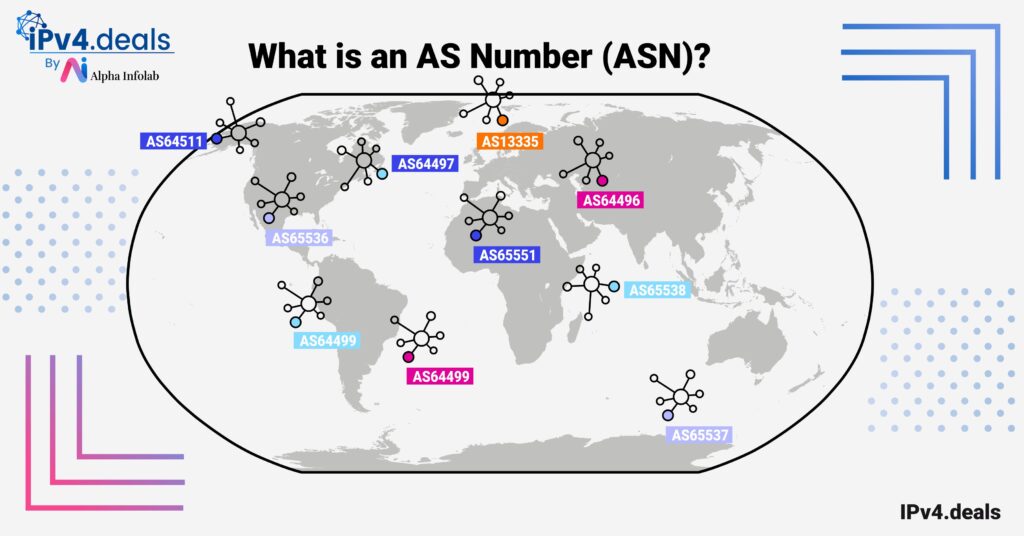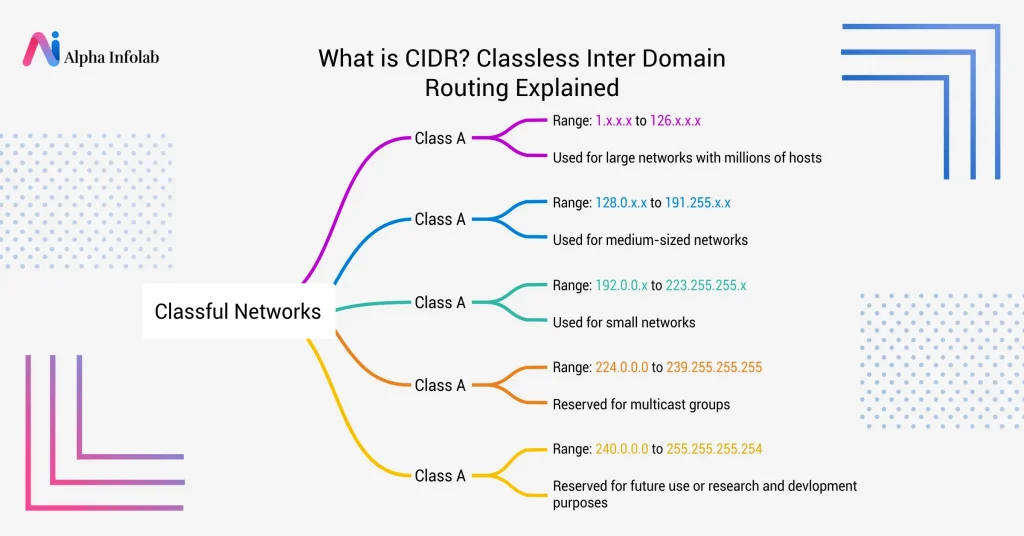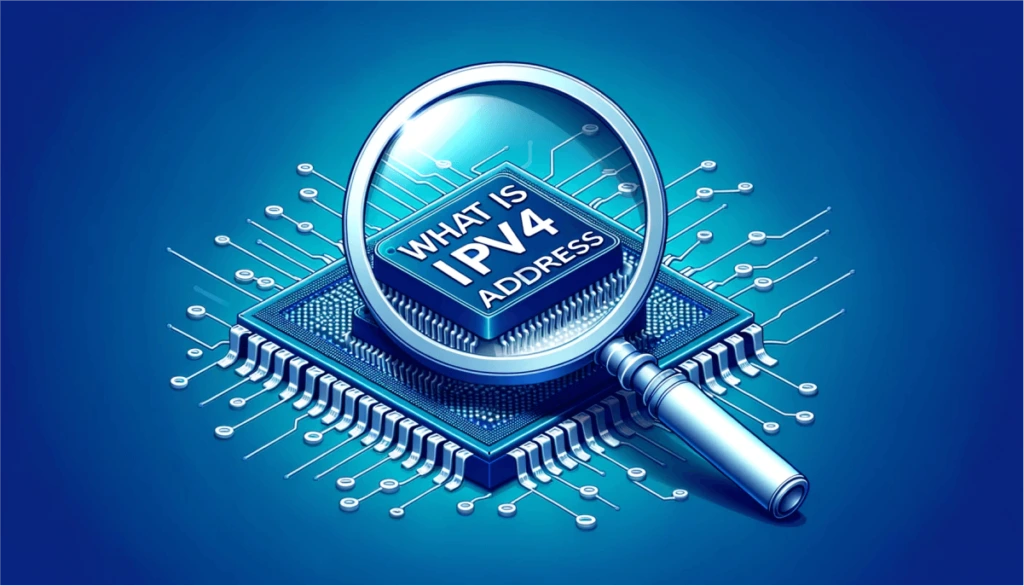The internet is a complex network of networks, and one of the key components that make it work is the Autonomous System Number (ASN). Understanding ASN is not just for network engineers or IT professionals. It’s important for anyone who uses the internet because it’s part of the invisible engine that ensures your emails reach their destination, your web pages load correctly, and your online transactions are secure. Let’s break it down and understand what it is and why it’s important.
Table of Contents
The Internet: A Network of Networks
Think of the internet as a massive postal system. Each town (or network) has its own post office (or AS) that manages the mail (or data packets) within that town. These post offices are all part of a larger postal system (the internet). Each post office has a unique identifier (ASN), just like every business has a unique business license number.
What is an Autonomous System (AS)?
An Autonomous System (AS) is a large network or group of networks that has a unified routing policy. Every computer or device that connects to the internet is connected to an AS. Each AS controls a specific set of IP addresses, similar to how a town’s post office is responsible for delivering mail to all the addresses within that town. This range of IP addresses that a given AS has control over is called their ‘IP address space.’
What is an Autonomous System Number (ASN)?
Autonomous System Numbers (ASNs) are unique identifiers assigned to each AS. They come in two types: 16-bit and 32-bit.
16-bit ASNs: These were the original format for ASNs and can have values ranging from 1 to 65534. However, with the rapid growth of the internet, the pool of available 16-bit ASNs started to deplete.
32-bit ASNs: To cater to the growing need for more ASNs, the 32-bit format was introduced. These can have values ranging from 131072 to 4294967294, providing a much larger pool of unique identifiers.
The two types are functionally equivalent, and both are used in the Border Gateway Protocol (BGP) for routing decisions. The main difference is the number of unique ASNs they can provide. The introduction of 32-bit ASNs has ensured that the internet can continue to grow without running out of unique identifiers for Autonomous Systems.
This situation is somewhat analogous to the transition from IPv4 to IPv6 for IP addresses. Originally, IP addresses were 32 bits long (IPv4), providing about 4.3 billion unique addresses. However, with the explosion of devices connecting to the internet, we started running out of IPv4 addresses. To solve this, IPv6 was introduced, which has 128 bits and provides a virtually unlimited number of unique addresses. Similarly, the introduction of 32-bit ASNs has expanded the number of unique identifiers available for Autonomous Systems.
How does ASN work in networking?
ASNs play a crucial role in the routing of data packets between ASes. This is done via the Border Gateway Protocol (BGP), which is responsible for directing packets on the fastest route to their destination. To put it in simpler terms, imagine you’re on a road trip. BGP is like your GPS system, constantly analyzing the road conditions, traffic, and other factors to guide you on the fastest route to your destination. Without BGP, IP packets would bounce around the internet randomly from AS to AS, like a driver trying to reach their destination by guessing which roads to take.
How are ASNs assigned?
ASNs are allocated by the Internet Assigned Numbers Authority (IANA) to Regional Internet Registries (RIRs). These RIRs then further allocate AS Numbers to network operators according to their policies. The five RIRs are:
- AFRINIC
- APNIC
- ARIN
- LACNIC
- RIPE NCC
You can obtain AS Numbers from the registry in your region.
While each RIR may have specific requirements, the core criteria for obtaining an ASN are generally similar across the board:
- Multi-Homing: The network should be multi-homed, meaning it has connections to more than one other network for redundancy and reliability.
- Unique Routing Policy: The network should have a unique routing policy, or there should be a technical need for a globally unique ASN.
- Future Compliance: The network should be able to demonstrate that it will meet these criteria upon receiving the ASN or within a reasonably short time thereafter.
- Routing Policy Details: The applicant should provide details of their routing policy, including the ASNs with which they will interconnect and the IP addresses that will be announced through the requested ASN.
Remember, these are just general guidelines. If you’re considering applying for an ASN, you should check the specific requirements of the RIR in your region.
How do Autonomous Systems connect with each other?
ASes connect with each other and exchange network traffic (data packets) through a process called peering. Peering is a voluntary interconnection of administratively separate internet networks for the purpose of exchanging traffic between the users of each network.
There are two main types of peering: private and public.
Private Peering: This is typically done between two parties over a direct physical link or through a third-party network service.
Public Peering: This is usually done at Internet Exchange Points (IXPs). An IXP is a physical infrastructure through which Internet service providers (ISPs) and Content Delivery Networks (CDNs) exchange internet traffic between their networks. These IXPs help to keep local traffic local, reducing the cost of transit and improving network efficiency.
Peering decisions are typically made based on the amount of data that the ASes want to send to each other and the cost of the data transit. The goal is to ensure that data is routed as efficiently and cost-effectively as possible.
So, while the process might seem complex, it’s all part of the invisible machinery that keeps the internet running smoothly and efficiently.
Conclusion
ASN is a unique identifier that plays a crucial role in the internet’s infrastructure, enabling efficient routing of information and ensuring that data packets reach their intended destinations. Whether you’re a network operator, an internet service provider, or a user browsing the web, the ASN plays a crucial role in your online experience. It’s just one of the many components that keep the internet running smoothly.
Frequently Asked Questions
What is an autonomous system (AS)?
An Autonomous System (AS) is a large network or group of networks that has a unified routing policy. Every computer or device that connects to the internet is connected to an AS. Each AS controls a specific set of IP addresses.
What is an autonomous system number (ASN)?
Autonomous System Numbers (ASNs) are unique identifiers assigned to each AS. They come in two types: 16-bit and 32-bit. The two types are functionally equivalent, and both are used in the Border Gateway Protocol (BGP) for routing decisions.
How does ASN work in networking?
ASNs play a crucial role in the routing of data packets between ASes. This is done via the Border Gateway Protocol (BGP), which is responsible for directing packets on the fastest route to their destination.
How are ASNs assigned?
ASNs are allocated by the Internet Assigned Numbers Authority (IANA) to Regional Internet Registries (RIRs). These RIRs then further allocate AS Numbers to network operators according to their policies.
How do autonomous systems connect with each other
ASes connect with each other and exchange network traffic (data packets) through a process called peering. Peering is a voluntary interconnection of administratively separate internet networks for the purpose of exchanging traffic between the users of each network.





